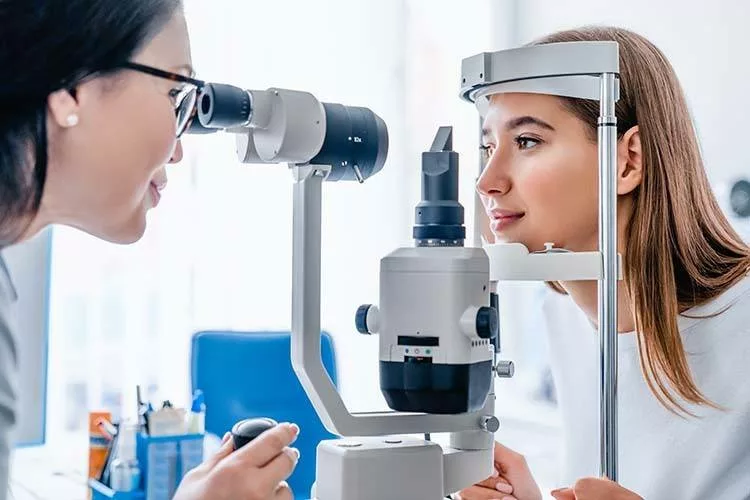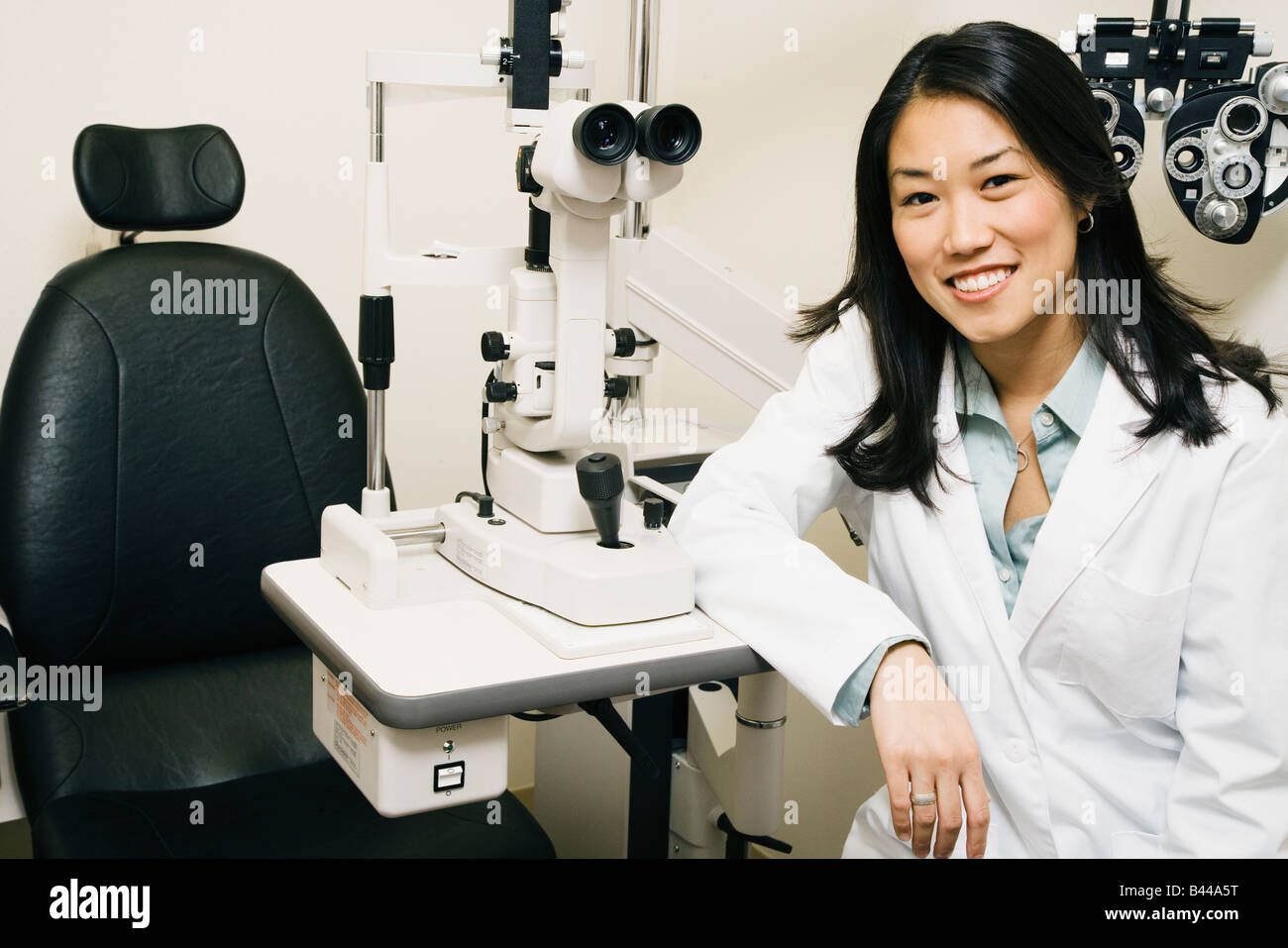Discovering the current Technical Improvements in Optometry and What They Mean for Optometrists
From the accuracy of Optical Coherence Tomography to the nuanced insights used by AI-driven analysis devices, these innovations are establishing brand-new criteria in person analysis and treatment. As these advancements penetrate the practice, eye doctors are faced with the obstacle of accepting these tools to improve person results.
Innovations in Diagnostic Devices
Advancing the area of optometry, advancements in analysis devices have actually revolutionized the means eye treatment specialists analyze and detect visual disabilities and eye conditions. The past decade has observed substantial technological improvements, allowing even more comprehensive and exact evaluations.
An additional key development is the introduction of advanced corneal topography systems, which map the surface area curvature of the cornea with accuracy. These tools are especially valuable for fitting contact lenses and diagnosing corneal conditions. Additionally, digital retinal imaging has changed standard ophthalmoscopy, offering detailed, scenic sights of the retina that assist in comprehensive visual assessments.
The advancement of wavefront aberrometry has also been essential, enabling the analysis of refractive errors with unrivaled accuracy (Eye Doctor). This technology aids in customizing restorative lenses and enhancing surgical outcomes for refractive surgeries. Jointly, these diagnostic advancements empower eye doctors to deliver exceptional person care, making certain early intervention and tailored treatment approaches, inevitably improving aesthetic health and wellness results
AI in Patient Management
Structure on the structure of cutting-edge diagnostic tools, the incorporation of fabricated intelligence (AI) in client management stands for a transformative jump for optometry. AI systems are significantly used to enhance performance, precision, and personalization in person treatment. By analyzing large amounts of information, AI can identify patterns and anticipate potential eye problems, allowing eye doctors to customize interventions extra effectively. This capability is vital in taking care of persistent eye illness such as glaucoma and diabetic person retinopathy, where early detection and constant monitoring are vital.
Additionally, AI-driven platforms promote structured person interactions and administrative processes. Automated scheduling, virtual examinations, and personalized follow-up plans not just improve client satisfaction however additionally maximize time administration for specialists. These systems can triage individuals based upon the seriousness of their conditions, ensuring that those in vital need receive punctual interest.
Furthermore, AI enhances decision-making by giving eye doctors with evidence-based recommendations and therapy pathways. By integrating data from electronic health and wellness documents, AI tools offer insights that notify scientific decisions, lowering the risk of errors and improving individual outcomes. As AI remains to advance, its function in person monitoring will likely broaden, reshaping the landscape of optometric care.
Breakthroughs in Retinal Imaging
In the world of optometry, retinal imaging has actually observed amazing technological improvements that are improving diagnostic capacities and person care. Developments such as Optical Coherence Tomography (OCT) and fundus digital photography have transformed exactly how optometrists assess the retina and imagine. OCT, in particular, provides high-resolution, cross-sectional photos of the retina, allowing for the thorough examination of its layers. This capability is important for very early detection and monitoring of conditions like glaucoma, diabetic retinopathy, and age-related macular degeneration.
Boosted imaging methods like OCT angiography are additional refining analysis accuracy. Eye Doctor Optometrist. Such improvements facilitate the recognition of minute retinal adjustments that could represent condition development.
In addition, improvements in expert system are increasing retinal imaging by making it possible for automated evaluation of large datasets. These systems assist optometrists in recognizing patterns a measure of pathology, consequently boosting diagnostic precision and effectiveness. Collectively, these advancements are changing retinal imaging right into a keystone of modern eye care, boosting end results and increasing therapeutic opportunities.
Teleoptometry's Growing Role
Teleoptometry is progressively becoming a vital element of eye treatment, driven by developments in data and analysis devices. As optometry welcomes electronic change, teleoptometry assists in remote appointments, enabling optometrists to click to investigate prolong their solutions beyond conventional boundaries. This is specifically advantageous in country and underserved areas where accessibility to specialized eye care is often restricted. By leveraging high-resolution video conferencing and progressed retinal imaging, eye doctors can carry out thorough eye exams from afar, ensuring timely diagnosis and therapy.
The assimilation of fabricated knowledge (AI) more enhances teleoptometry, making it possible for the evaluation of aesthetic information and aiding in the discovery of ocular problems such as glaucoma and diabetic retinopathy. AI-powered formulas can quickly translate complicated imaging information, providing optometrists with beneficial insights that reinforce professional decision-making.
Additionally, teleoptometry sustains connection of care via smooth assimilation with digital wellness documents (EHRs), allowing eye doctors to preserve comprehensive patient histories. When consulting with various experts., this makes certain that people get regular and personalized care even.
Regardless of these benefits, challenges stay, consisting of ensuring data safety and taking care of patient expectations. Teleoptometry stands for a substantial stride in the direction of even more obtainable, efficient, and patient-centered her explanation eye care. As innovation progresses, its duty is positioned to increase better.

Future Fads in Eye Treatment
A myriad of cutting-edge trends is readied to reshape the future of eye care, driven by technological developments and the progressing requirements of individuals. One substantial pattern is the assimilation of artificial intelligence (AI) in diagnostics, which promises to boost the accuracy and efficiency of eye assessments. AI formulas can evaluate substantial amounts of data from retinal pictures, potentially finding problems like diabetic retinopathy and glaucoma earlier than standard methods.
Furthermore, customized medicine is getting traction in optometry, with genetic screening notifying personalized treatment strategies. This technique aims to optimize person end results by tailoring treatments to private genetic accounts. Wearable innovation, such as clever call lenses, is also on the perspective, using real-time monitoring of intraocular stress or glucose degrees, therefore providing constant insights right into ocular and systemic wellness.
The adoption of increased truth (AR) and virtual reality (VR) in training and patient education is another emerging trend. These technologies supply immersive experiences that can enhance understanding and skills both for eye doctors and clients. As these fads develop, eye doctors have to stay abreast of technical innovations to supply innovative care, making sure moved here enhanced client end results and fulfillment in the vibrant landscape of eye care.
Conclusion

Jointly, these analysis innovations empower eye doctors to deliver remarkable person care, making certain early treatment and customized treatment techniques, inevitably enhancing aesthetic health and wellness outcomes.

As these technologies proceed to evolve, optometrists need to adjust and integrate them into practice, eventually enhancing operations efficiency and raising the criterion of eye treatment delivered to clients.